The Historical Significance
of the Mystichrome Cobra
Chapter 5
One Step Forward, Two Steps Back, Several Leaps Forward
When the Terminator Cobra first bowed in the spring of 2002, SVT, more so than Ford Motor Company, was still trying to overcome the power-rating debacle and embarrassment of the 1999 SVT Cobra. Despite that new Cobra’s stated power ratings of 320 horsepower and 317 lb-ft of torque, owners felt their new cars were somehow slower. When compared with similarly-equipped 1998 SVT Cobras, on-track testing proved that the new 1999 SVT Cobras were indeed slower in a 0–60 mph sprint by close to a whole second. Dyno tests proved that the calculated crankshaft power output was closer to 285 horsepower despite Ford’s claims of a 15-horsepower and 17-pound-per-foot torque increase over the 1998 model.
The inevitable consumer outcry caused Ford to take action on August 6, 1999, halting sales of any unsold 1999 SVT Cobras until the problem was remedied. As an act of good faith and dedication to fixing the problem, Ford cancelled production of the 2000 SVT Cobra, except for the 2000 SVT Cobra R which used an entirely different powertrain. Taking nearly a year to complete, Ford ended up replacing every affected car’s intake manifold, certain computer components, and the exhaust system from the catalytic converters to the tailpipes to achieve a “true” 320 horsepower at the crankshaft. Even though great strides were taken to restore the car’s true performance, Ford and SVT had to go further to restore their reputation with their target customer.
Below: The 17-inch wheels on the 1999 SVT Mustang Cobra were painted silver and exhibited a simple, clean design. The taillights had amber turn signals, and the decklid badge read “SVT Cobra” since the rear fascia still read “Mustang.”
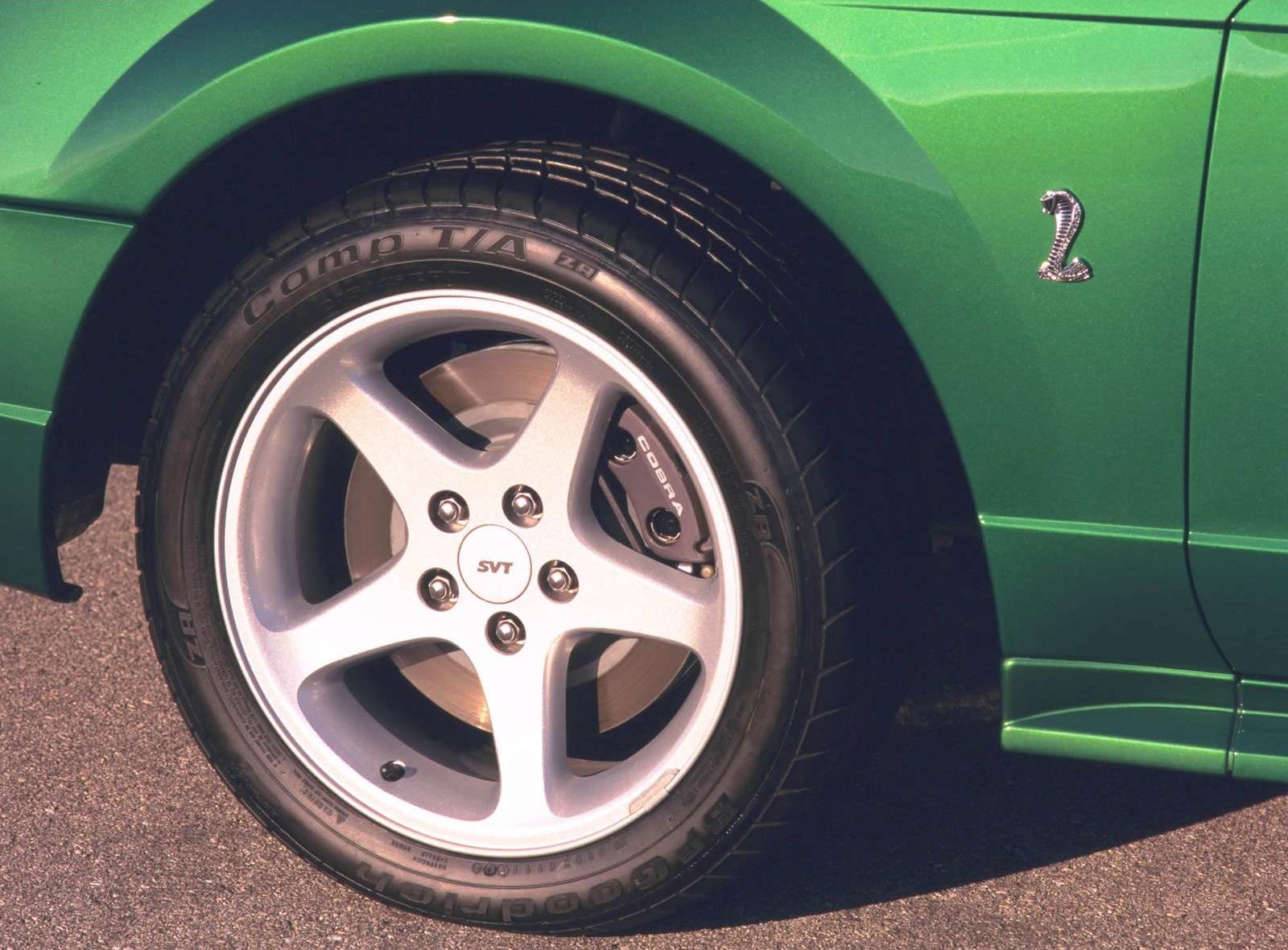
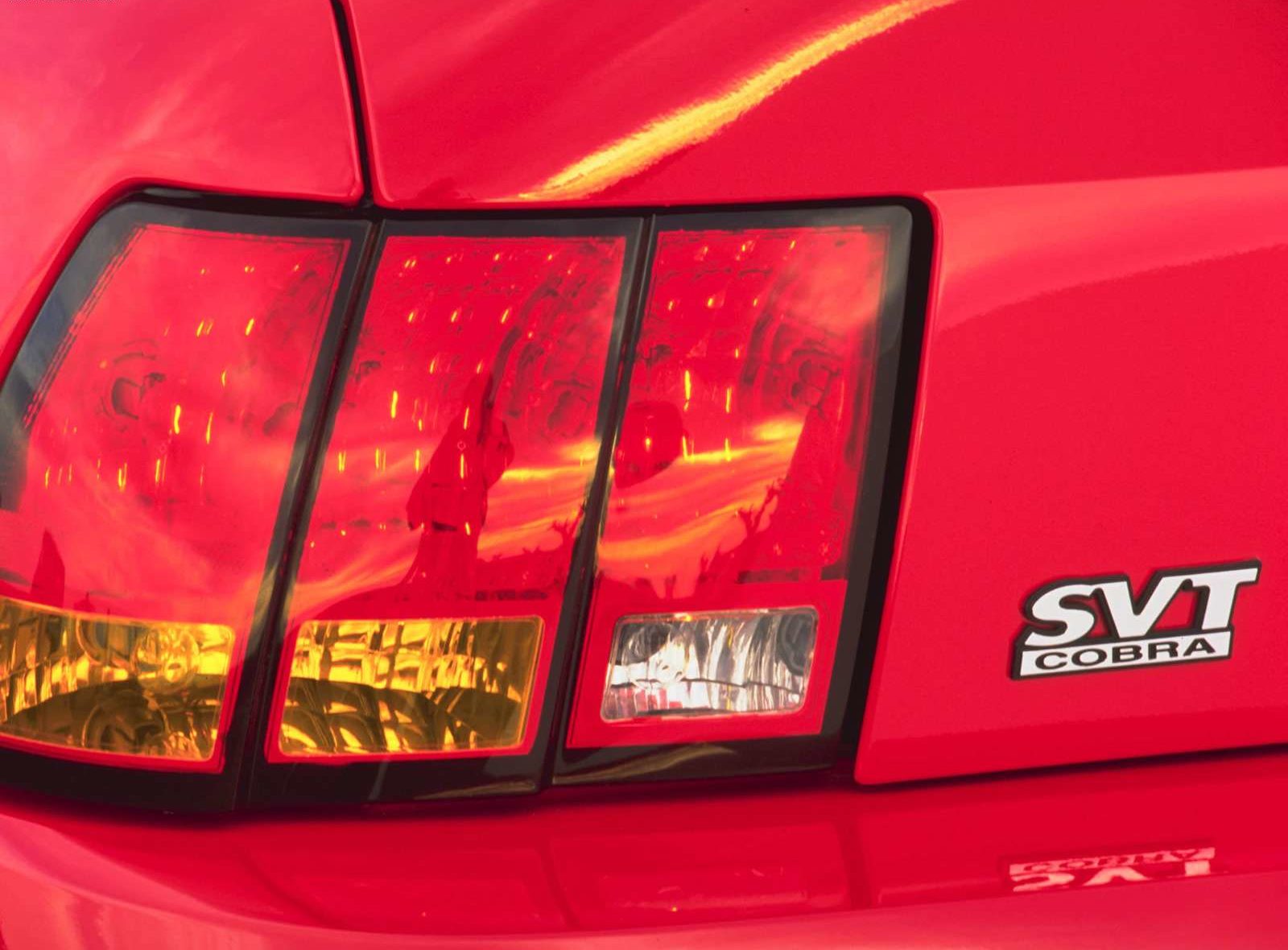
Enter the Terminator Cobra into the big picture. SVT knew they had to go above and beyond with what started out as the 2002 SVT Mustang Cobra proposal. Due to extensive testing, research, and development, the new Cobra got pushed to the 2003 model year. SVT executives O. John Coletti and Tom Scarpello were racing enthusiasts and car guys at heart who wanted to give power and performance to the customer. Thus, the new Cobra (now officially codenamed “Terminator”) started shaping up with incredible features such as forced induction through the use of an Eaton M-112 roots-type supercharger delivering up to 8 psi of boost; race-tested, forged internals like Zollner pistons and Manley H-beam connecting rods, which were modified by SVT engineers with a wrist pin oiling hole; proper cooling through the use of an integrated intercooler; and a bulletproof, cast-iron block. Other improvements included the use of a lightweight aluminum flywheel connected to a Tremec T-56 six-speed manual transmission, 3.55:1 rear axle ratio, and stronger 31-spline halfshafts with revised upper and lower control arms. Initial testing of preproduction prototypes confirmed what Coletti and his team already knew: Upon release, the Terminator would be a beast of a different color unlike any previous Ford vehicle ever produced. Essentially, the Terminator Cobra was a race-ready vehicle straight from the factory and right out of the box.
Of course, SVT executives were met with opposition along the way when proposing budgets that included all of these expensive parts, but they held onto their customer-centric beliefs and continued to push the Terminator through development and into production with all the expensive parts installed. Coletti did not want the new Cobra to be a compromise in any way, shape, or form, but it ended up costing him.
Even though SVT’s customers were beyond pleased with the new Terminator Cobra, Ford’s corporate leaders were not amused with Coletti’s history of rogue decisions and unbending management style. The writing was on the wall regarding SVT’s fate when Scarpello, who had served as SVT Sales and Marketing Manager as well as Coletti’s staunchest ally, was suddenly transferred to a marketing vice-president position at Jaguar North America on November 15, 2004. Coletti, who had been SVT Director since 1994, was forced into early retirement when Ford named Hau Thai-Tang to head up SVT on December 1, 2004. The corporate powers at Ford saw SVT as being too independent, and they tightened the reins on the division by appointing someone that they could clearly control. With Coletti’s exit, SVT lost its heart, its soul, and its passion, and as history would soon reveal, SVT became nothing more than the “division” that made the engines for the reborn Shelby GT500 and eventual GT350 models. The Terminator Cobra has the distinction of being the only Cobra that was completely conceived and developed by SVT, which to this day stands as a testament to what can happen when a performance-oriented, skunkworks division has complete control of the products it chooses to develop. In this light, shame on Ford for killing off what could have brought more performance to their lineup, but then again, maybe this was the plan all along.
Below: The independent rear suspension enables the Terminator Cobra to take sharp turns and corners with great poise at a high rate of speed.
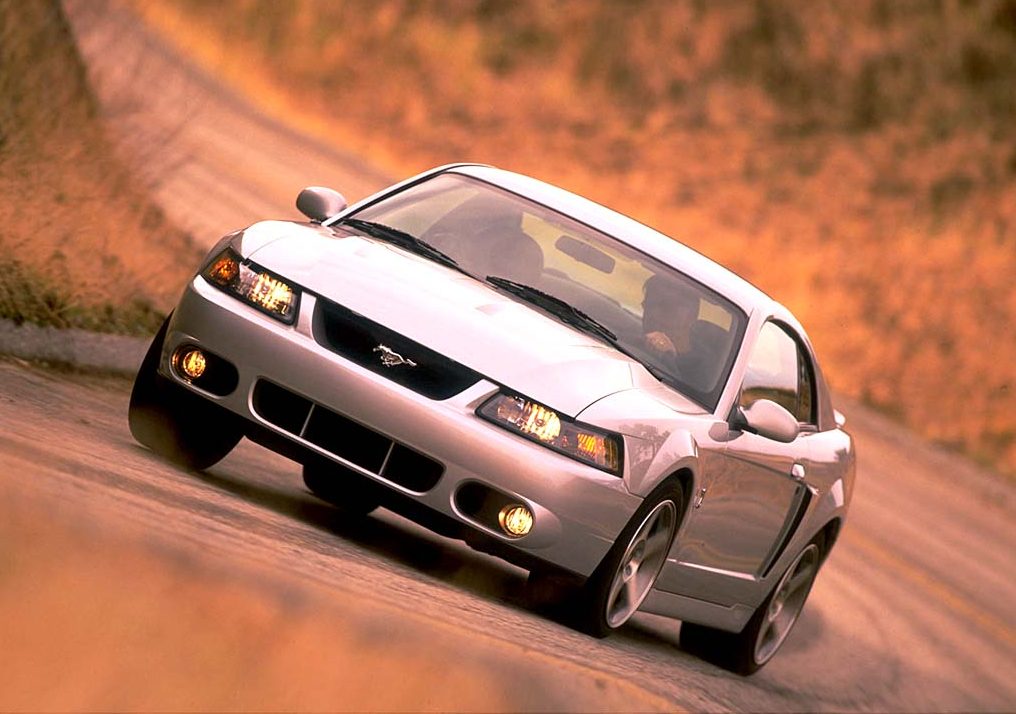
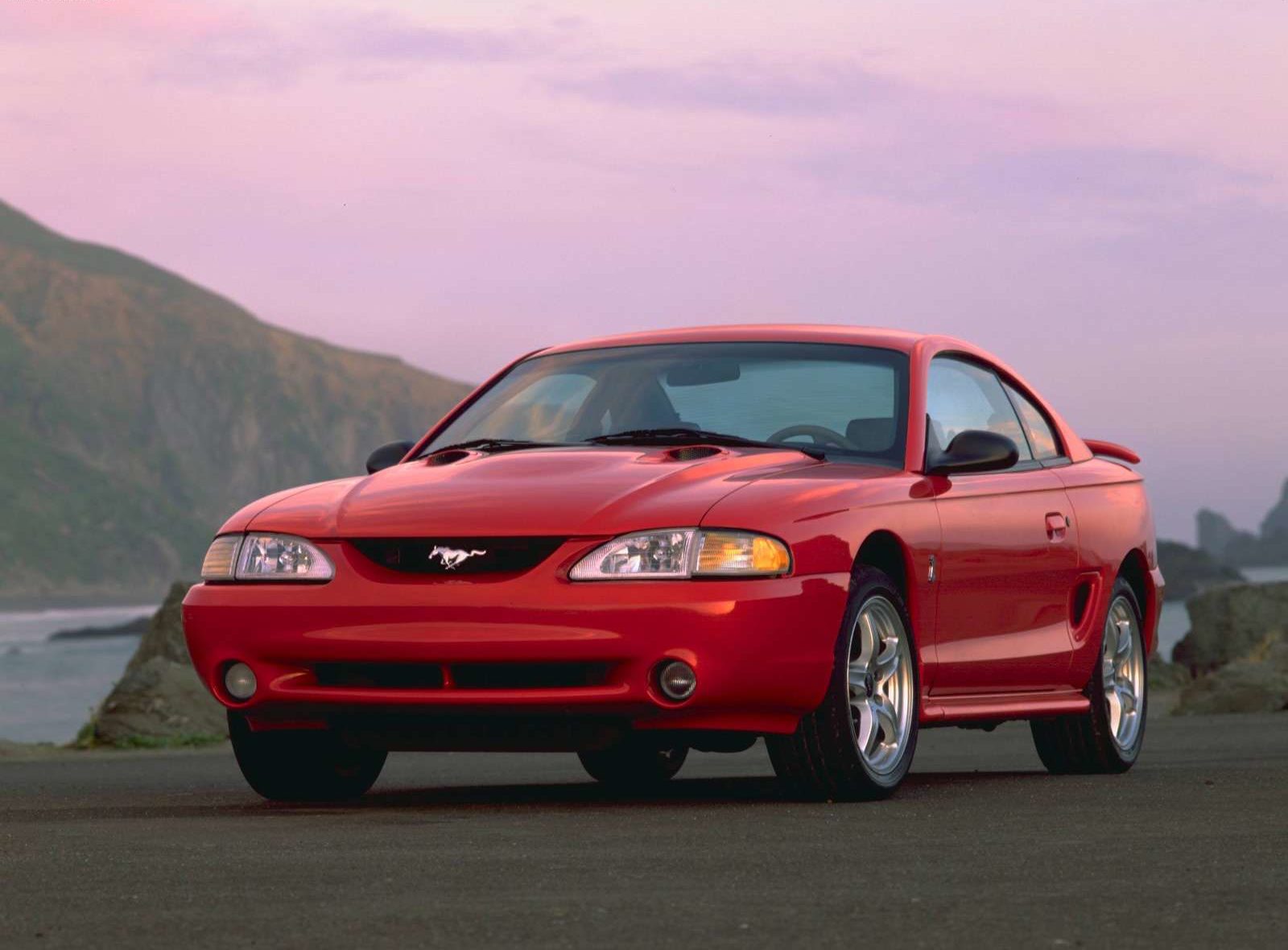
Above and below: Upon introducing the 1999 SVT Mustang Cobra, the 1998 model still proved to be faster and more powerful than its successor. On August 6, 1999, Ford signaled its commitment to customers and performance enthusiasts by halting sales of any unsold 1999 models, cancelling the 2000 model (except for the Cobra R), and remedying the Cobra’s power output ailments. The New Edge design philosophy translated well in Cobra guise, with a more aggressive stance than its Mustang V6 and GT brethren.
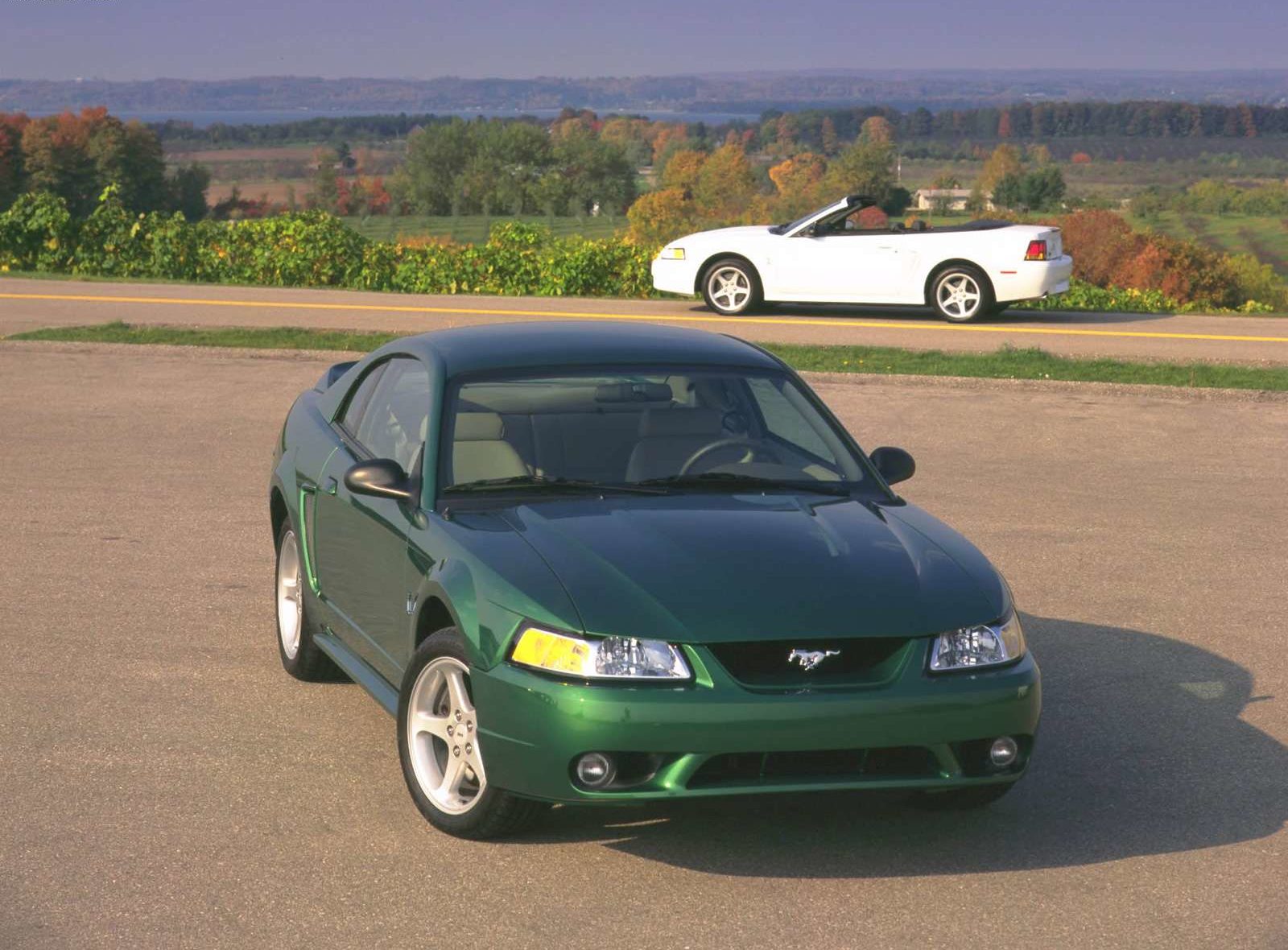
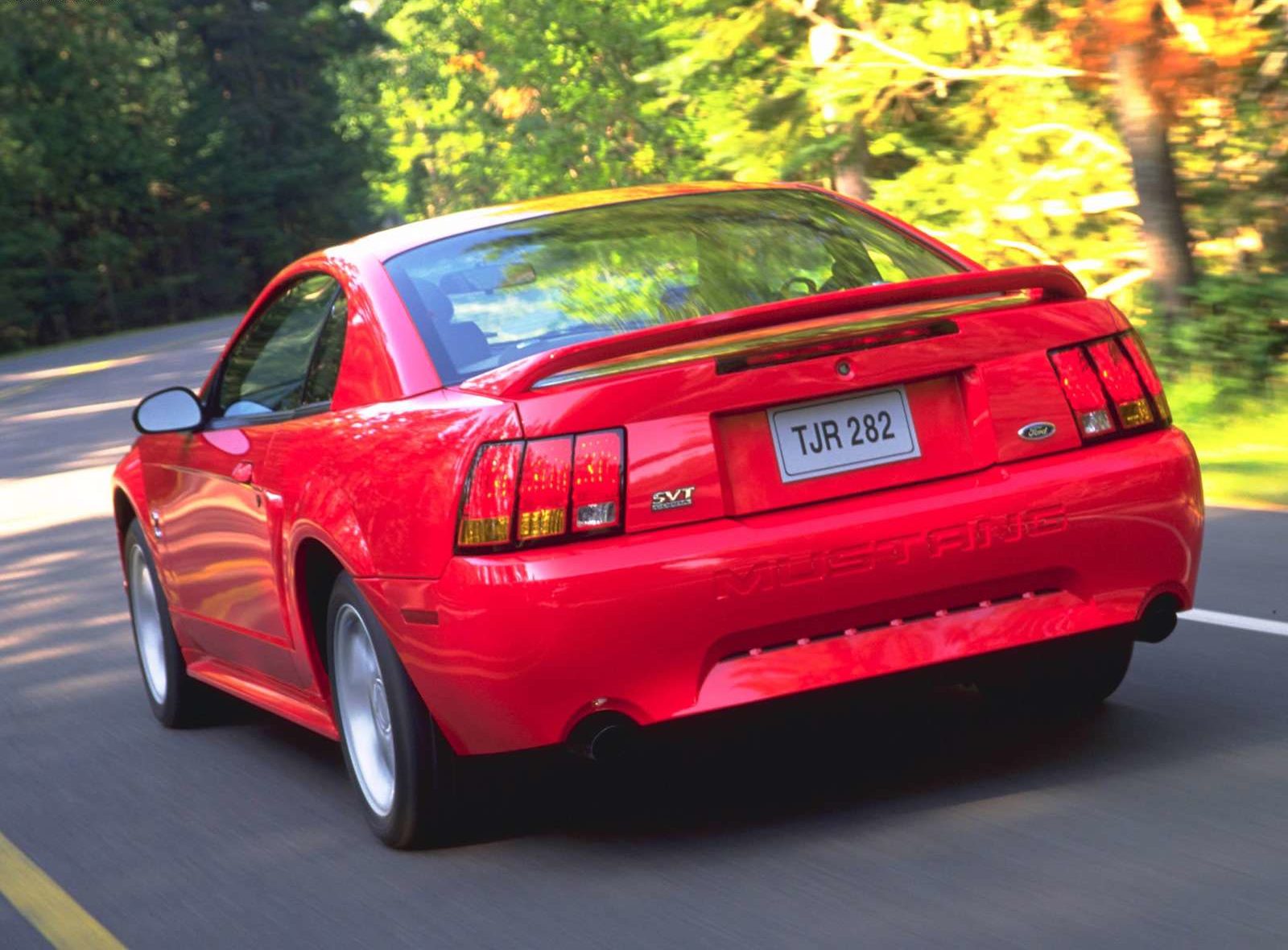
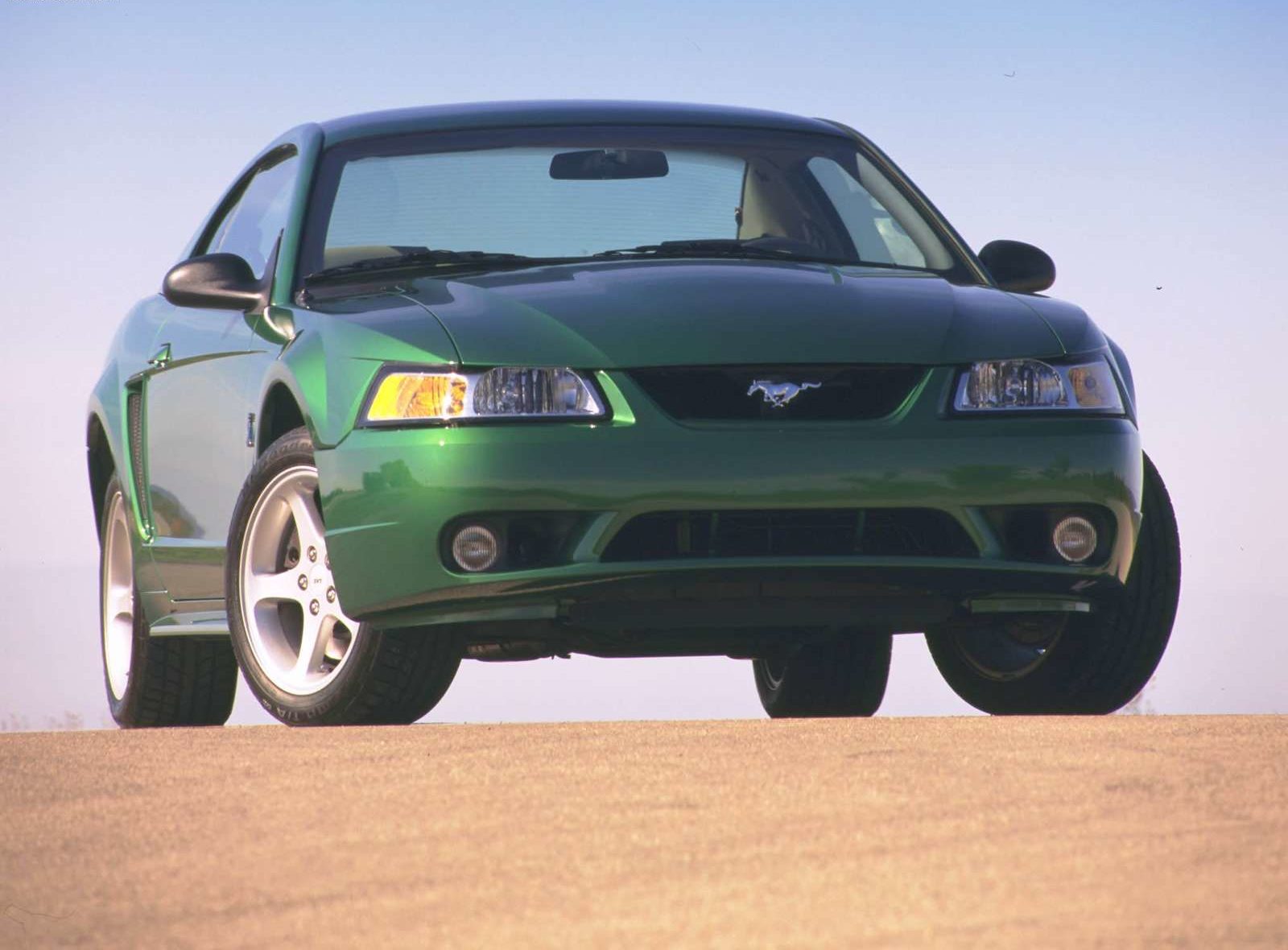
On February 6, 2002,
the Terminator Cobra made its debut
at the Chicago Auto Show
with an awe-inspiring, jaw-dropping,
tire-smoking entrance
in typical rockstar fashion.
Below: Upon its dramatic entrance by SVT executives O. John Coletti and Tom Scarpello, the debut of the Terminator Cobra signaled all-out performance and power. The show car was a coupe dressed in Sonic Blue Clearcoat Metallic, a new color to the Mustang palette for the 2003 model year.
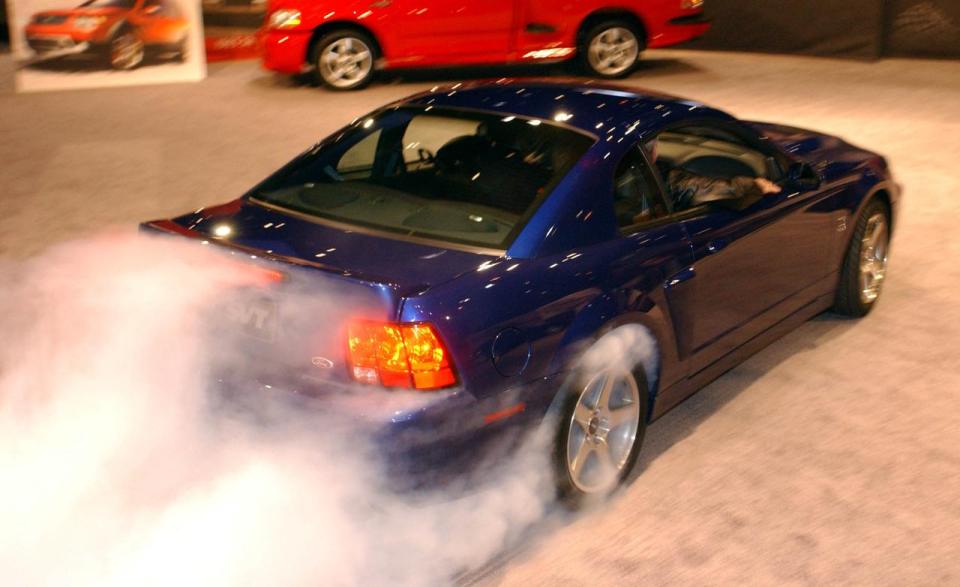
Below: Freedom in motoring at its finest, a Terminator Cobra convertible offers open-air fun with all the power and performance. Available in coupe and droptop, the Terminator Cobra was, and still is, a force with which to be reckoned.
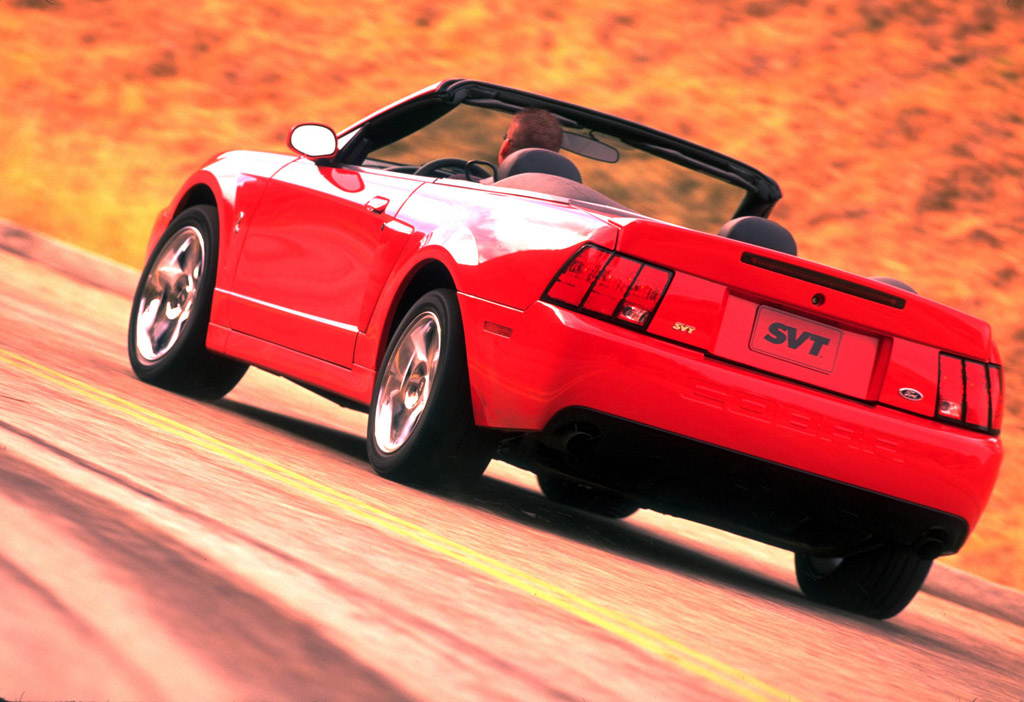
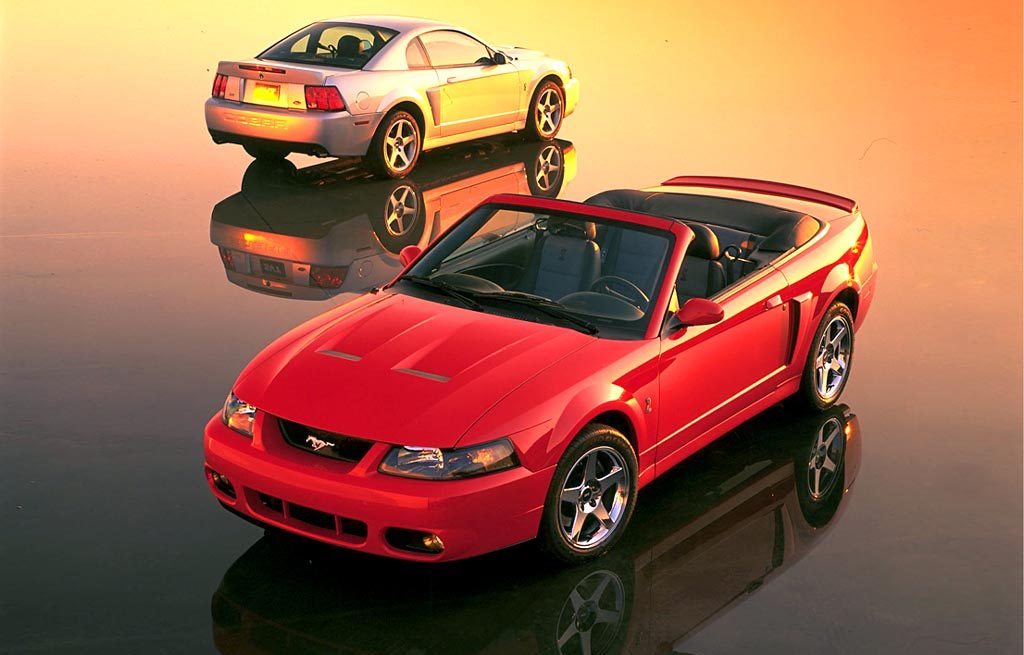
Continue to Chapter 6 >
